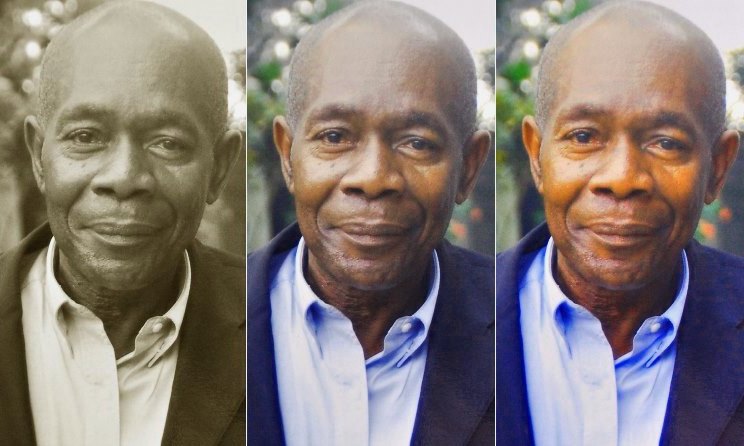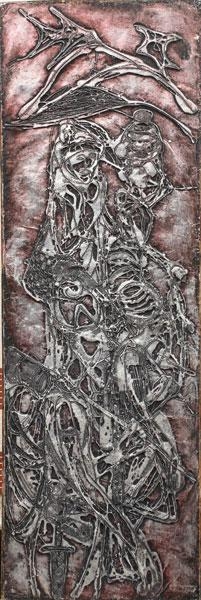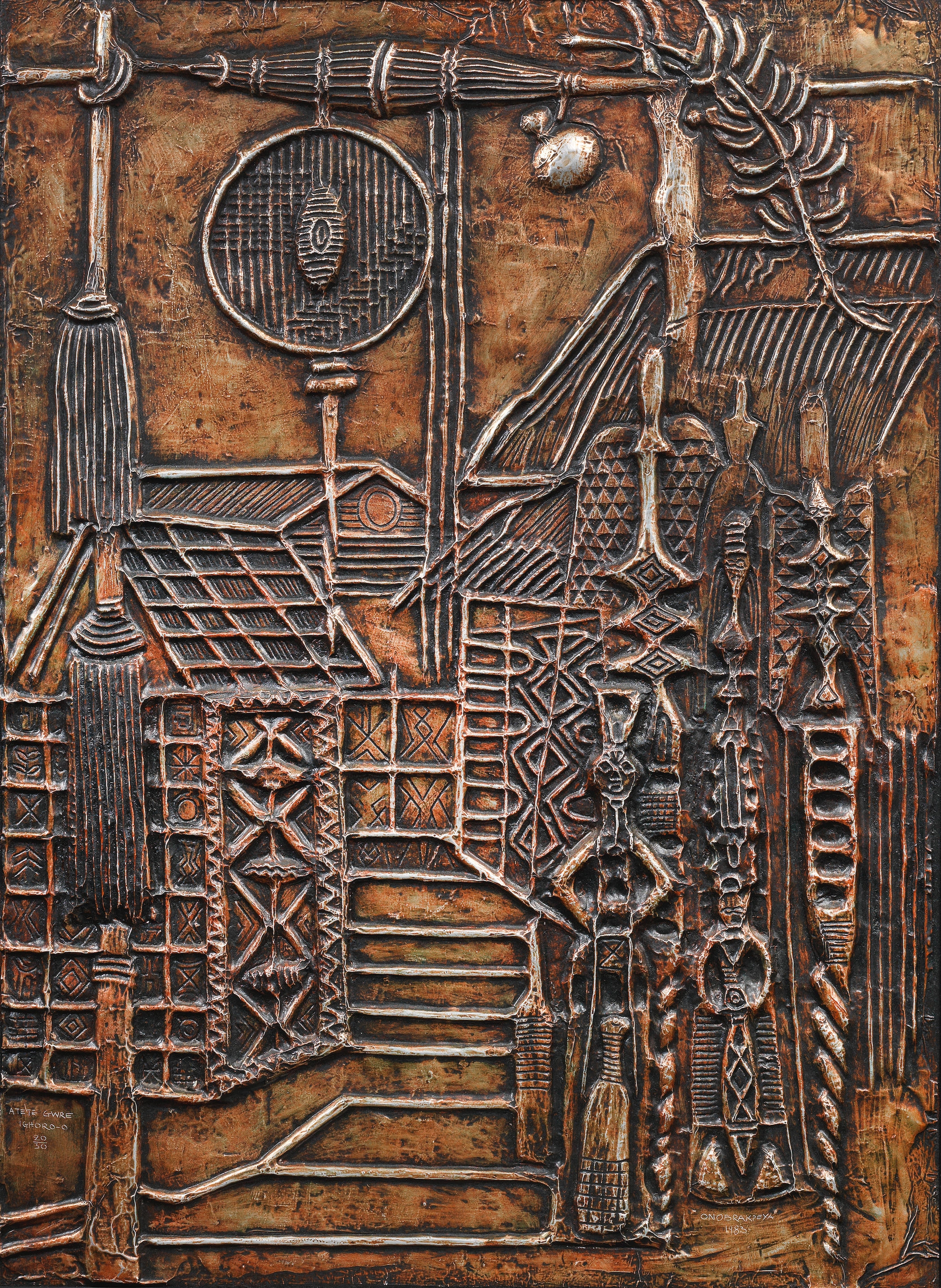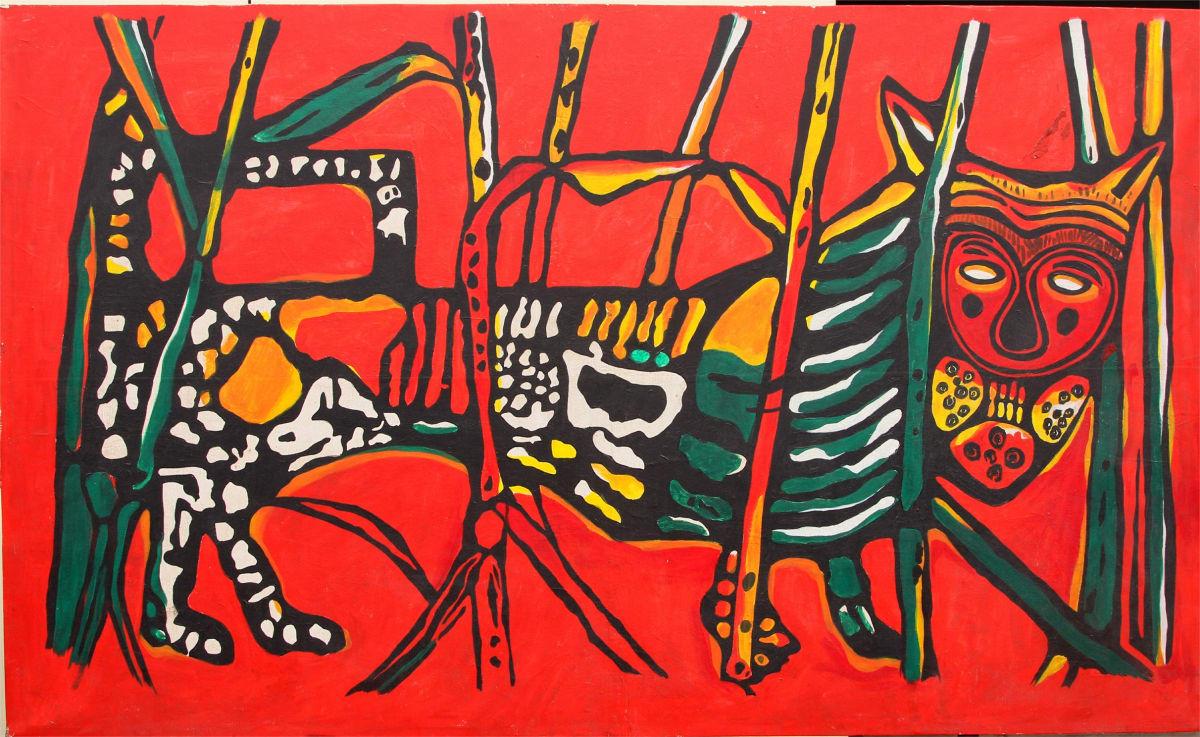Friday, October 18, 2024
Art as a Tool for Economic Growth and Social Change
Saturday, July 6, 2024
Legacy of Light: Honouring Zinno Akpoghene Orara
Simidele Adesanya : A Magnificent Obsession from Law Practice to Art and Gallery Curating
Simidele Adesanya, a second-generation Lagosian, embarked on an unconventional journey in the art world. Despite her educated background as a lawyer, she followed her passion for art, becoming a prominent arts promoter in Lagos. Her talent for networking and hosting intimate art gatherings in her home helped her build connections and attract art enthusiasts.
In 1992, she officially registered her gallery, facing financial challenges but maintaining unwavering commitment. Simidele's gallery stood out for its mission to elevate artists and the art profession, treating artworks as valuable assets. Her dedication bridged the gap between the artistic community and the wider public, leaving a significant mark on Lagos' art scene and the profession itself. In those early years her currency of trade was high ethical behaviour and conduct, with transparency and integrity as cannons. This professional behaviour brought a lot of respect not only to artists by the society at large, and gave a sense to many artists that one could survive from the toil of creating good works of art.
In the 2nd decade she collaborated and partnered with many persons and institutions, like Bisi Silva, where training seminars and education series across the country where developed. Also were auctions with Terra Kulture. Other shows like watercolour and pastel Exhibitions were developed and perfected. These were exploratory years that were ruled by a lot of passion and better business planning than the proceeding decade.
In the third decade of Sinmidele Adesanya's gallery journey, a period of consolidation took shape. With a stable source of income firmly established, Sinmidele began to channel resources into projects that aligned with her gallery's artistic interests and ambitions.
One notable outing was the gallery's participation in Art Dubai in 2016. Art Dubai provided a global stage where artists and their works could be showcased, reaching a diverse and international audience. Another significant milestone was the Masters show, a prestigious event that attracted distinguished dignitaries, including the former Vice President of Nigeria. These 2 events underscored the growing influence and impact of Simidele's gallery on the national and international art scene. While the cash flow generated at such international events might not have been the most favourable, the exposure and publicity and lessons gained were immeasurable
Looking ahead, Sinmidele believed that the art industry could progress by fostering greater cooperation and reducing personal agendas. Collaboration among artists, galleries, and institutions could lead to more meaningful and impactful artistic endeavours. She envisioned a future where well-thought-out ideas could be supported through sponsorship, allowing for the creation of even more remarkable events and exhibitions.
Sinmidele's "My Drim Gallery" proudly stood as a testament to her dedication and perseverance. Over three decades, the gallery had hosted over 200 exhibitions and provided crucial support to over 300 artists. It had become a hub of artistic innovation, a platform for artistic expression, and a driving force in propelling the Lagos art scene onto the global stage.
Simidele Adesanya's journey was a testament to the transformative power of passion, determination, and a commitment to promoting the arts. Her gallery had not only contributed significantly to the cultural landscape of Lagos but had also set a shining example for the entire art industry, showing what could be achieved through cooperation, vision, and unwavering dedication to the world of art.
|
|
||
Tribute to Fasuyi
CHIEF Timothy Adebanjo Fasuyi, a founding father of the Society of Nigerian Artists (SNA), was a visionary. His role in nurturing the SNA was pivotal, fostering a community where artists could collaborate and flourish. His leadership was not just administrative; it was inspirational, empowering artists to explore and express, shaping a vibrant artistic culture in Nigeria.
During the Nigerian Civil War, Fasuyi’s role was profound. He was among the select artists whose works toured globally, not merely as exhibitions but as emissaries of Nigerian creativity and resilience. These exhibitions served as powerful counter-narratives to the prevailing stories of conflict, showcasing our rich cultural heritage and artistic prowess.
As an art adviser to the Nigerian Government, Fasuyi wielded his expertise to shape national art policies and programmes, championing art education and cultural development. His tenure marked a significant elevation of art in our national consciousness.

Late Pa Timothy Adebanjo Fasuyi
Fasuyi’s artistic brilliance was most vivid in his mixed media works. He captured the essence of Nigerian life with a blend of surrealism and symbolism, integrating various mediums and styles seamlessly. His works were not just visually arresting; they were narratively compelling, deeply connected to our culture and traditions.
Chief Fasuyi’s legacy continues to illuminate the art world. His unwavering commitment to nurturing emerging talents and elevating Nigerian art, both locally and globally has left a profound impact. Through initiatives like the Fasuyi Prize at Ahmadu Bello University and the establishment of The Tim and Carol Art Gallery by his son, his lifelong dedication to art endures, serving as an enduring symbol of his passion and influence in the artistic community.
Through his works, leadership in the SNA, international exhibitions, and advisory roles, Fasuyi’s influence remains a cornerstone in the narrative of Nigerian art. He inspired a future where creativity, community, and cultural pride are celebrated, leaving a legacy that continues to inspire and guide future generations.
In tribute to Chief Timothy Adebanjo Fasuyi, I salute a life richly lived in the service of art, education, and culture. His journey was a testament to the transformative power of art in shaping society and legacy. His spirit lives on in every brushstroke, in every young artist he inspired, and in every corner of the Nigerian art world he helped shape.
* Onobrakpeya, a Nigeria National Order of Merit (NNOM), and UNESCO Human Living Treasure, wrote in this glowing tribute for the recently deceased Fasuyi from Lagos
Tribute to Tam Fiofori: Keen Chronicler of Nigerian Culture
 |
| Tam FioforI |
Tam Fiofori, was a visionary filmmaker, photographer, and writer, whose indelible mark enriched Nigeria's artistic realm profoundly.
Tam Fiofori's creative brilliance shone brightly across our cultural landscape, yet our society's nurturing of his genius fell short. In comparison to his equally talented peers in more supportive settings, Tam's full potential may not have been fully realized.
To honour his legacy and support future luminaries, our society must establish genius grants and specialized funds. These initiatives empower gifted individuals to create impactful contributions, fostering a nurturing environment where their creativity can flourish. Such support not only enhances their productivity but also enriches our collective cultural fabric.
Sunday, January 7, 2024
A Prayer for Settlement
Prayer
May the Divine guide travelers on unknown paths and grant them peaceful settlement
A daily walk with Bruce Onobrakpeya: Day 8
Even in times of forced change and uncertainty, we are never alone. The strength and wisdom of our ancestors and the enduring stability of nature guide and protect us. This connection offers hope and resilience, reminding us that in the transient journey of life, we carry forward the legacy of the past and the promise of safe passage, regardless of the challenges we face."
Picture Credit: Onobrakpeya Travelers shows . the image of people on the move, carrying their essential belongings on their heads and shoulders, powerfully symbolizing the reality of forced migration, a global issue affecting millions. It evokes the struggle of leaving familiar environments, where generations have lived, due to unforeseen circumstances, be they natural disasters or human conflicts. This scene is not only a stark reminder of the transience and uncertainty of life but also serves as a poignant prayer for protection and safety over all those compelled to undertake such journeys. It underscores the profound truth that stability can be fleeting, and today's settled individuals might find themselves as travelers tomorrow. This visual and narrative representation captures the essence of vulnerability, resilience, and the unceasing hope for a safer future amidst the trials of forced displacement.
Friday, January 5, 2024
May the True Gains of our Work Never be dispersed
Nigerian Proverb (Urhobo)
Atete Gwre Ighoro-o
A daily walk with Bruce Onobrakpeya: Day 6
This expression which roughly translates to "May the Hawking tray always return with its
owner at the end of the day" can be understood as a prayer or a wish for
both success and safety. The "Hawking tray" in this context symbolizes
the means or tools one uses to earn a living, akin to a hawker's tray
full of goods for sale. The phrase "always return with its owner"
underscores the dual hope that the individual not only achieves success
(represented by the tray being full of the day's profits and gains) but
also returns safely home at the end of the day. This proverb, therefore,
encompasses a comprehensive blessing – that one's daily efforts lead to
fruitful gains and that these are safely brought back home, ensuring
both economic well-being and personal safety. On a reflective note the expression may also be an invocation and prayer to God, for the Gift of a life well spent, crowned with attributes like Wealth, Peace of mind, Prosperity and a Great legacy in life
Picture Credit: Onobrakpeya. In Atete Gwre Ighoro-o, Onobrakpeya depicts two poles supporting a third bar to form an entrance gate to a village. Suspended from the cross-bar is the "Atete" (straw-tray) which contains prayers and blessings tied to its middle.
Wednesday, January 3, 2024
The Leopard In a random walk in the Cornfield
Nigerian Proverb in Pidgin English
One Man meat, na another Person Poison
A daily walk with Bruce Onobrakpeya: Day 4
Though the forest might seem daunting and mysterious to many, it's a
sanctuary to the leopard. This metaphor underlines the profound truth
that what may be challenging and unfamiliar to some can be a haven of
comfort and familiarity to others. It highlights the rich tapestry of
diverse experiences and viewpoints that different individuals or groups
possess. Furthermore, it serves as a call for unity, inviting people
from all walks of life to embrace and learn from each other's unique
perspectives."
Picture Credit: Leopard In the Cornfield by Bruce Onobrakpeya, 1966



